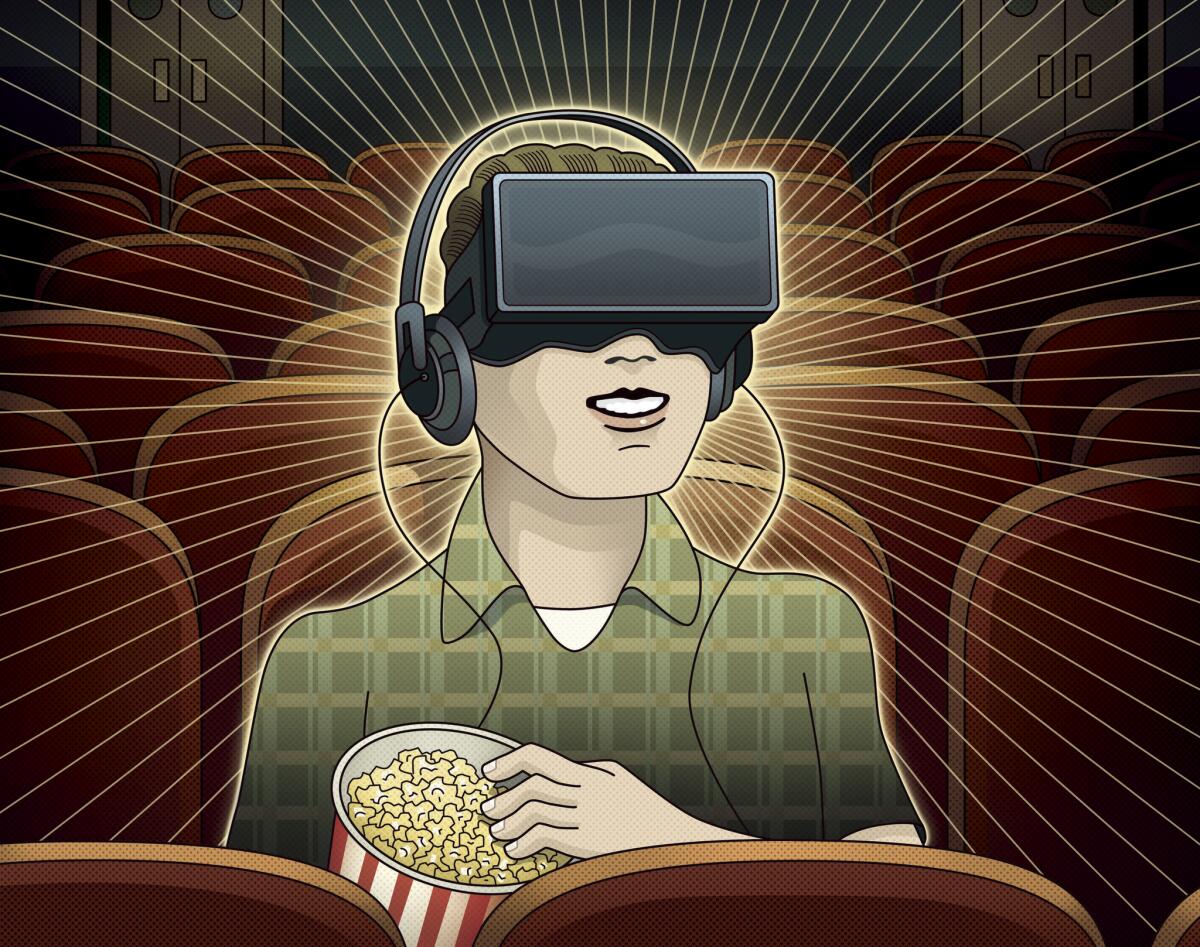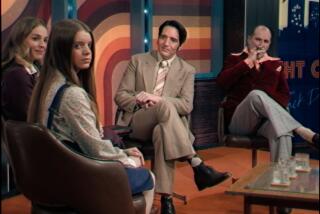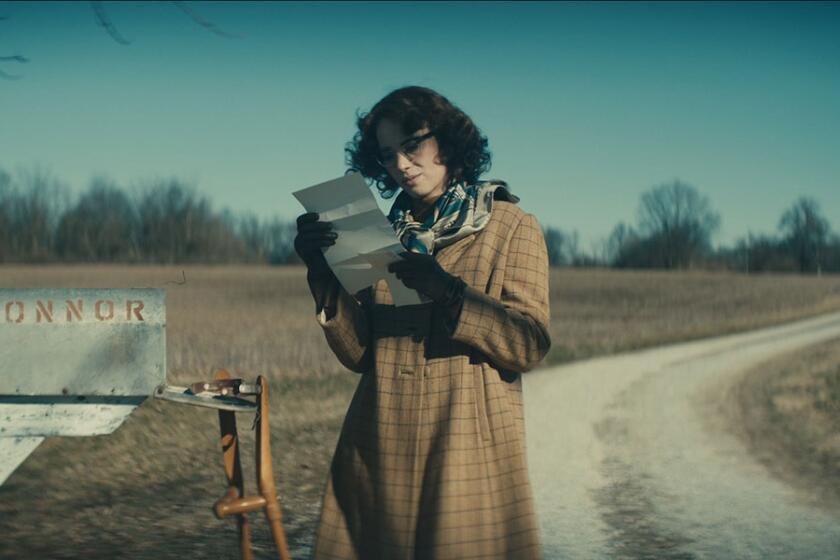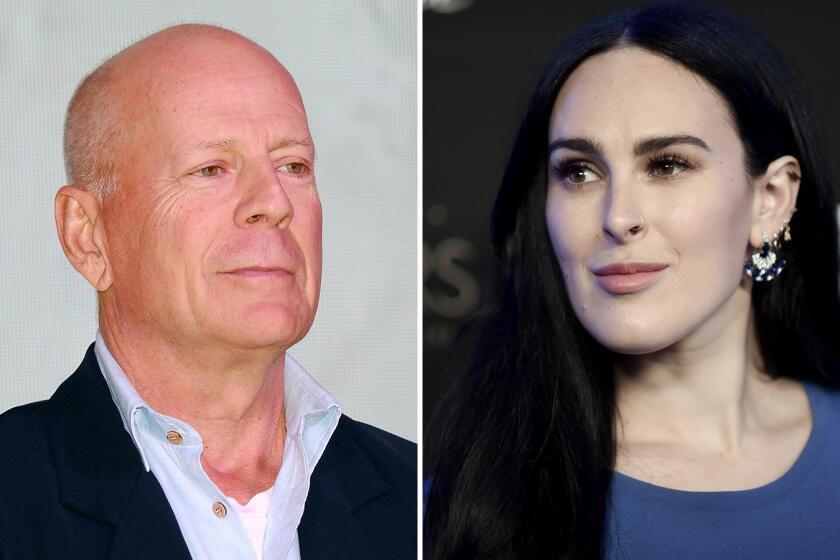For the VR generation, the differences between TV and movies may already be irrelevant

The upcoming crime drama “The Night Of” would seem like a prototypical cable show — commissioned by HBO, airing for eight episodes, designed as summer appointment viewing.
Yet look beneath and a film beast stirs. “The Night Of” was co-written by Steven Zallian, an Oscar winner, and stars John Turturro; neither has ever been a key figure on a TV series. Every episode was directed by Zallian — highly atypical for a TV show. The scripts were also all finished before a single moment was shot — unlike much of television, in which writers often stay just an episode or two ahead production.
If any doubts existed about the project’s film nature, they were wiped away upon a visit to “The Night Of’s” post-production facilities in New York. Zallian was about to celebrate his year-long anniversary working on the piece, all before the public has even caught the first glimpse of what he was doing. That’s creeping into auteur territory.
FULL COVERAGE: The blur between movies and television
It’s far from the only project that dances across the film-television line. A documentary about O.J. Simpson, a nonfiction take on the celibate Laker A.C. Green from Will Ferrell and Adam McKay, and Chloe Sevigny’s more fictional story (one hopes) of a girl who turns into a cat—all are examples of projects you couldn’t, for all the jewels in Blake Lively’s closet, slap with a traditional definition.
The Sevigny piece would seem to be a film--it’s made by veteran movie producers and debuting at the Cannes Film Festival. But it’s a short, almost like a mini-TV episode. And it will receive its commercial debut on the women’s news-and-lifestyle website Refinery29 -- a space not known for cinema.
The Ferrell-McKay piece is also from people who make movies, and is also built on a high-concept cinematic idea. But it was financed by and aired on ESPN, and relies on the kind of viral-video appeal common these days to late-night television.
Also on ESPN is “O.J. Simpson: Made in America,” from Ezra Edelman. It is, length-wise, the opposite of these projects, clocking in at nearly eight hours. That’s five episodes, airing over five nights this June. Seems like pretty standard TV.
Except it was made by a feature director, conceived first as a film before growing in length, and was shot, as Edelman tells it, to be a cohesive whole. So confident are ESPN and Edelman in this idea that they’re qualifying “O.J.” for the Oscars by giving it a theatrical debut this week.
As questions of blurring arise between film and TV, it’s worth asking how specific creators and companies are dealing with these changes. But it also pays to take a broader look. Film and television have for decades been the twin pillars on which our entertainment empire was built. Yet it’s increasingly apparent that the two are becoming more alike, more commingled, less distinguishable. What was once a clear delineation is now a blurry line. Traditional labels — and maybe a whole lot more — are slowly being upended.
On one level, it doesn’t matter what we call any of this. Entertainment viewing is a little like Willie Sutton’s bank-robbing. We turn on screens because that’s where the content is. If that screen is housed in a large building downtown, a phone in our pocket, or a TV in our living room, the simple equation remains. If it’s good, we watch. If it doesn’t, we turn it off, or rail about it on Twitter.
But it turns out there are myriad practical consequences to whether something is categorized as film or television. That’s true in Hollywood, where pay structures tend to vary between TV and film, where entire separate award institutions have risen up independent of one another.
It’s also true in journalism. At this newsroom and many others, film writing and TV writing have long been determinedly separate. So who should write about content that straddles the line? Is “O.J.” in the domain of the TV or film department? What about a stand-alone film on a TV-like service such as Netflix or Amazon?
News outlets are still figuring out how to navigate all this. Those of us who report on either film or TV find ourselves increasingly crossing over. And critics, who have thus far maintained a comparatively strict firewall, will no doubt soon start to see some erosion.
The idea of a more general screen critic -- reviewing all manner of content, from five minutes to five hours, whether consumed in giant buildings or on our glasses -- may make the notion of specialized film and TV critics as outdated a newsroom fixture as the fedora or cigarette.
Entertainment viewing is a little like Willie Sutton’s bank-robbing. We turn on screens because that’s where the content is.
— Steve Zeitchik
There are, perhaps, even more important philosophical consequences. Film and television historically haven’t just been convenient labels. They’re meant to connote certain types of programming, a certain method of production, a certain type of consumption.
Even as recently as a few years ago, when cable television had bumped out independent film as mainstream America’s prestige venue of choice, TV and film each came with certain hallmarks.
But what happens when it becomes harder and harder to tell the two apart -- where every attempt at definition just enmeshes us further?
Much of this is a reflection of a changing business. Film producers I’ve known for years have lately been saying things like, “We’re doing a lot more in television.” That change, though, may yet be a way station on a longer road, where the idea of defiantly saying, “I’m doing a lot more television” may give way to, “Why does it matter at all what we call it?”
In case such a marger seems unlikely or unnecessary, consider the generational factor. To those of us born before the other Clinton was in the White House, it can be hard to conceive, but for the first time in American history a generation is coming of age that has viewed the majority of its lifetime entertainment on neither a film nor a television screen.
All of this is to say nothing of a whole new technology frontier: The medium of virtual reality. What to make of that? High-profile directors and early adopters are hailing its immersive possibilities as a new cinematic language. Yet VR is watched in short bursts, far from a movie theater. Some studios even group VR under home entertainment -- the same division as the bargain-DVD bin. These are categorizations that flummox even people in Silicon Valley. And when Silicon Valley is flummoxed, it’s time to worry.
VR could change not just the material but how we watch it. Because by viewing virtual content we can also watch virtually. The idea of gathering around a television screen at home and the notion of meeting friends at a theater have been the two methods of consuming entertainment socially, our yin and yang of escaping the mundane.
But VR means we’ll be able to do both without doing either. Apps already exist that allow friends and family members across an ocean to watch together, and these are going to get more common as VR becomes more popular. (If you have a teenager in your life, you’ve likely already seen how this can work with video games.) The notion of a distribution platform like film or television commanding a certain type of viewing will evaporate with VR. The iPhone has given us entertainment any time. VR will provide entertainment anywhere with anyone.
Film and television historically haven’t just been convenient labels. They connote certain types of programming, production and consumption.
— Steve Zeitchik
Some of the changes might seem unsettling, especially to those of us who’ve grown up on fundamental distinctions. But it’s an accident of technology, in a sense, that these forms existed in the first place. Movie theaters and the studio system that served them sprang up before the advent of the television. Then, when the TV arrived, it was forced to develop a new niche. But technology has eliminated the need for these silos. New forms of content creation are pushing them even further together.
Film and television will, for the foreseeable future, continue to exist, at least nominally, since networks and studios have been around for a while, and longstanding Hollywood entities don’t give up their designations easily. Also, shooting a network or basic-cable television show requires pausing for commercials, which films haven’t added (yet). That’s a major difference in terms of pacing and rhythm, according to those who’ve done both.
But as formats evolve and platforms shift, this binary system could fall by the wayside. The industry and the culture at large could stop thinking of visual entertainment as two distinct poles, but a unified whole, where more careful distinctions are made based on length, platform and shooting style
It can all seem like too much to stomach.
But then, we’re living in the future. It’s supposed to be different.
MORE:
Why ‘O.J.: Made in America’ might be the first television show to win an Oscar
‘O.J.: Made in America’ is a movie so compelling you want it never to end ... even at 7-plus hours
Hollywood looks to bring virtual-reality cinema to life
More to Read
Only good movies
Get the Indie Focus newsletter, Mark Olsen's weekly guide to the world of cinema.
You may occasionally receive promotional content from the Los Angeles Times.







